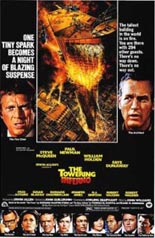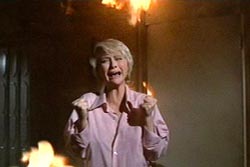
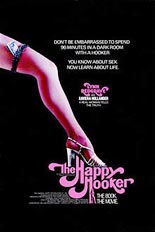 Admittedly without researching, I can think of no prostitute other than Xaviera Hollander to have achieved such a level of American fame that Hollywood responded in kind by turning her memoir and her life into a veritable film franchise. Naturally, her household-name status was a genuine by-product of the Me Decade (as opposed to our current Me Me ME Decade); I’m half-surprised she wasn’t called upon by prime-time TV to corporate-synergize by testing the cabin mattresses aboard The Love Boat or causing Tattoo to spill some ink during a visit to Fantasy Island.
Admittedly without researching, I can think of no prostitute other than Xaviera Hollander to have achieved such a level of American fame that Hollywood responded in kind by turning her memoir and her life into a veritable film franchise. Naturally, her household-name status was a genuine by-product of the Me Decade (as opposed to our current Me Me ME Decade); I’m half-surprised she wasn’t called upon by prime-time TV to corporate-synergize by testing the cabin mattresses aboard The Love Boat or causing Tattoo to spill some ink during a visit to Fantasy Island.
Based on Hollander’s 1971 memoir of the same name, The Happy Hooker is a sex comedy that is neither all that sexy nor all that funny. Furthermore, title be damned, it’s not all that happy, either. In fact, Nicholas Sgarro’s virgin outing as a feature director is so bad, it’s depressing. (No wonder he was banished to television forever after, cresting with 54 episodes of Knots Landing.)
Gods and Monsters’ Lynn Redgrave strikes one as vigorously miscast in the role of the real-life, larger-than-life Hollander, but at least she grants sympathy to her character. Arriving in America from Holland, Xaviera is gaga for the rich guy she moved continents for (Nicholas Pryor, Risky Business), until his deep-seated mommy issues suffocate their planned nuptials with a throw pillow.
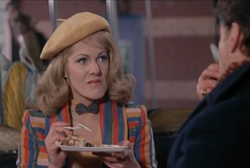 She revolts the same way many women do: balling as many men as possible. What she enjoys, she soon gets paid for, which leads to full-time freelancing and, eventually, full-blown whoredom heading a bordello. See, Xavier does anything and anyone, while her peers may flinch. Make out with a black chick? Not a problem! X’s color-blind tongue is already out, wet and a-waggin’!
She revolts the same way many women do: balling as many men as possible. What she enjoys, she soon gets paid for, which leads to full-time freelancing and, eventually, full-blown whoredom heading a bordello. See, Xavier does anything and anyone, while her peers may flinch. Make out with a black chick? Not a problem! X’s color-blind tongue is already out, wet and a-waggin’!
For something so sordid-sounding, The Happy Hooker is not only boring, but almost fully absent of nudity. Redgrave’s big number has her stripping to her underwear — and then back again — while dancing atop the conference room of a Wall Street executive (Tom Poston, TV’s Newhart). The only flesh bared is brief, yet belongs to Anita Morris, Ruthless People’s risqué redhead, here turned into a giant banana split with extra whipped cream. As with every scene in Sgarro’s film, it’s not as much fun as it sounds.
This awful flick was followed by 1977’s awful The Happy Hooker Goes to Washington and 1980’s truly awful The Happy Hooker Goes to Hollywood, which would be forgotten from pop culture’s collective conscience if not for Adam West (TV’s Batman) appearing in drag and getting blown. With each adventure, a different leading lady donned the garter belt. —Ed Donovan


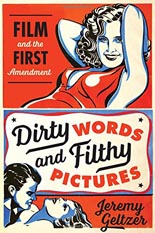
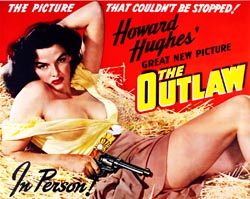

 In the mighty tradition of Roger Corman’s
In the mighty tradition of Roger Corman’s 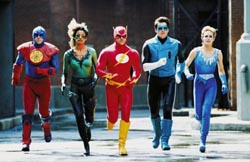 Joining them in their sporadic deeds of derring-do is Fire (Michelle Hurd,
Joining them in their sporadic deeds of derring-do is Fire (Michelle Hurd, 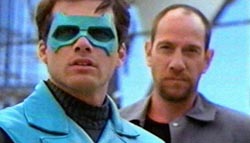 As you have every right to expect, Justice League of America makes for a veritable two-course meal of corn and cheese. After ABC’s more-than-decent
As you have every right to expect, Justice League of America makes for a veritable two-course meal of corn and cheese. After ABC’s more-than-decent 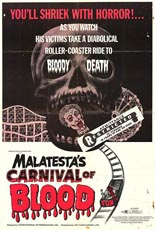
 Not to be confused with 1970’s
Not to be confused with 1970’s 
